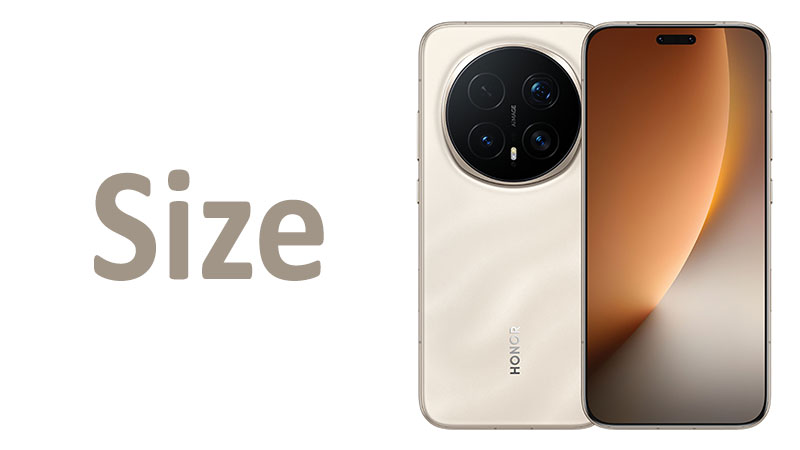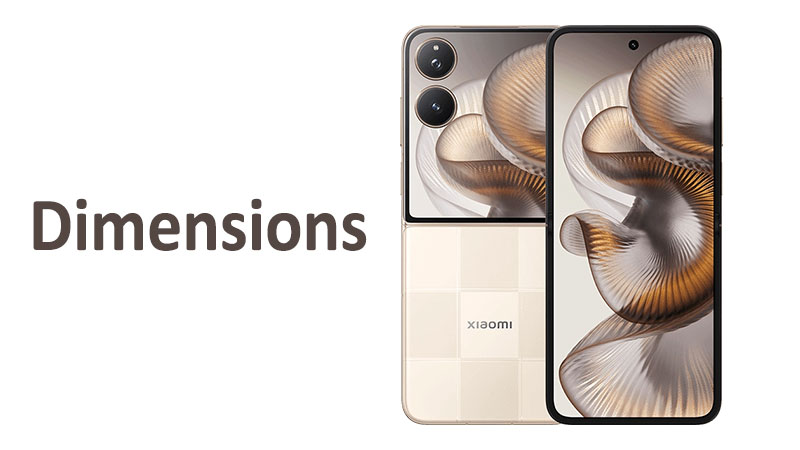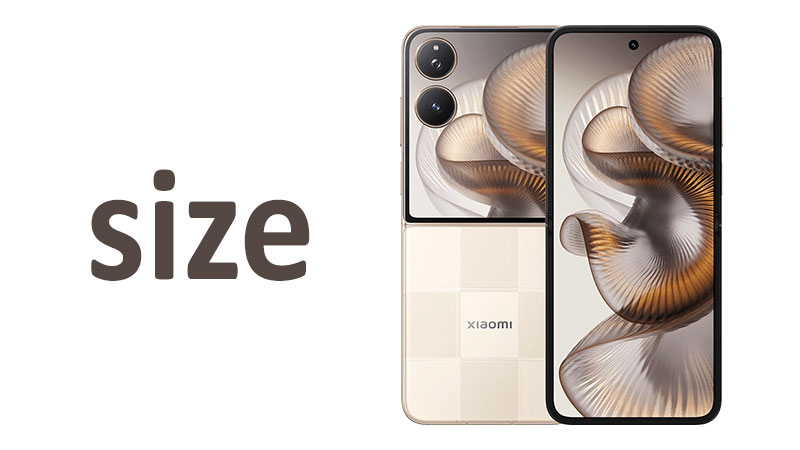The Honor Magic 8 Pro size is arguably the most critical factor for potential buyers. Device dimensions directly influence daily handling. The size also impacts comfort, portability, and overall user experience. This comprehensive guide analyzes the precise specifications of the Honor Magic 8 Pro. We will break down the screen diagonal, the physical dimensions, and the crucial screen-to-body ratio. Understanding these details helps consumers make an informed purchase decision. We will explore how these measurements translate into real-world usability and compare them with top competitors.
1. Display Analysis: The 6.58-Inch Canvas
The Honor Magic 8 Pro features a notable 6.58-inch display. This size establishes the phone firmly within the category of standard modern flagships. A large screen diagonal is essential for media consumption in today’s market. This specific size balances visual immersion with practical usability. It provides a huge workspace without making the phone entirely unwieldy.
1.1. The Immersive 6.58-Inch Diagonal
The 6.58-inch diagonal offers a truly immersive viewing experience. It gives users a vast canvas for all digital activities. These activities include streaming high-resolution videos and playing intensive mobile games. The visual area immediately enhances clarity and detail recognition. This larger screen makes content viewing much more enjoyable.
The increase in screen size is a direct response to consumer demand. People want devices that minimize scrolling. They also want improved efficiency for viewing complex apps. This screen size delivers that improved efficiency successfully. It is large enough to feel cinematic. However, it still avoids the excessive bulk of larger Ultra-class smartphones.
1.2. Active Area Breakdown: 105.3 Square Centimeters
The display provides approximately 105.3 square centimeters of active screen space. This is a generous area for digital interaction. This substantial real estate is especially useful for multitasking. Users can easily run two apps side-by-side. For example, they can watch a video while replying to messages.
This area makes productivity tasks seamless. Reviewing long documents becomes easier. Spreadsheets and charts are also simpler to analyze. The large active area reduces eye strain during extended use. It allows on-screen elements to appear larger and clearer. This benefit appeals to professionals and heavy media consumers alike.
1.3. Specialized Comparison: Media Consumption
The 6.58-inch screen provides a significant advantage over smaller rivals. Consider a compact flagship with a 6.1-inch display. The Magic 8 Pro offers dramatically more screen space. This difference is especially noticeable when viewing 16:9 video content. The extra screen diagonal reduces the apparent size of the black bars.
Compared to massive 6.9-inch devices, the difference is minimal in practice. The Magic 8 Pro screen provides nearly the same immersion. Crucially, it achieves this with a much smaller physical footprint. This makes the Honor Magic 8 Pro an excellent choice for a streaming phone. It is also a superior platform for competitive mobile gaming. The spacious display prevents controls from cluttering the game view.
1.4. Pros and Cons of the 6.58-Inch Display Size
This screen size offers clear advantages and predictable drawbacks. Buyers must assess these points based on their lifestyle.
Pros of 6.58-Inch
- The size guarantees a fully immersive viewing experience for movies and shows.
- The generous 105.3 cm² area is perfect for effective side-by-side app multitasking.
- It is an ideal platform for mobile gaming, enhancing visibility and control.
- The expanded screen area significantly improves the readability of all documents.
- This screen size offers a balance of immersion while avoiding the Ultra-model bulk.
Cons of 6.58-Inch
- The diagonal screen is challenging for true, one-handed operation. Two hands are often required.
- A larger screen naturally demands more power from the internal battery unit.
- Replacing this size of display panel can be more expensive than repairing a smaller screen.
- Users with very small hands may struggle to reach the top corners comfortably.
1.5. Buyer’s Perspective on Screen Size
Buyers should prioritize digital consumption when considering this screen size. If you spend many hours streaming, gaming, or reading, this display is superb. Understand that this size compromises absolute pocketability. It also limits comfort during single-handed use.
If portability is your main concern, consider a smaller device. The Honor Magic 8 Pro focuses on delivering a vast screen experience. It achieves this within a highly optimized and comfortable frame. This makes it a balanced choice for most flagship users.
2. Design Efficiency: 90.6% Screen-to-Body Ratio
The Honor Magic 8 Pro boasts an impressive screen-to-body ratio of approximately 90.6 percent. This specification is essential for the phone’s modern aesthetic. It measures the proportion of the front surface dedicated to the display itself. A high ratio signifies exceptionally thin bezels. It confirms the phone’s premium flagship design status.
2.1. Understanding the 90.6% Ratio
A 90.6 percent ratio means the bezels around the large 6.58-inch display are minimal. The front of the device appears to be almost entirely screen. This design choice creates a seamless, edge-to-edge viewing experience. Content seems to flow right up to the device’s physical edges. This offers a highly attractive visual effect.
Achieving such a high ratio requires sophisticated engineering. Manufacturers must miniaturize the front-facing camera cutouts. They also must slim down the proximity sensors and light sensors. This is a technical triumph in modern smartphone design.
2.2. Impact on Aesthetics and Modernity
The aesthetic impact of these thin bezels is undeniable. The phone feels immediately contemporary and high-end in the hand. Reduced border areas minimize visual distractions while you consume content. Users can focus entirely on the information displayed on the screen.
Minimizing the surrounding frame is crucial for practical usability. It allows a large screen to fit into a manageable physical footprint. The thin bezels prevent the tall 157.1 mm phone from feeling unnecessarily bulky. This optimization maximizes the visual area without sacrificing comfort.
2.3. Specialized Comparison: Bezel Wars
The 90.6 percent ratio is highly competitive with top-tier flagship rivals. The best competitors often achieve figures between 91 and 93 percent. However, the Magic 8 Pro is very close to this elite level. This confirms the phone’s position at the cutting edge of design.
Older flagship phones frequently featured ratios closer to 85 percent. The move to 90.6 percent demonstrates a significant generational leap. This enhancement is what defines the “Pro” experience in modern smartphones. It is a critical factor for many users evaluating a purchase.
2.4. Pros and Cons of High Ratio Design
The near bezel-less design offers clear functional and aesthetic benefits.
Pros of High Ratio
- The high ratio provides a seamless, edge-to-edge viewing experience for all media.
- Minimal bezels significantly enhance the phone’s modern, sophisticated look.
- It allows the huge 6.58-inch screen to fit into a more compact physical form.
- The reduced frame minimizes visual distractions during use.
Cons of High Ratio
- Thin bezels can increase the risk of accidental screen touches along the edges.
- The design requires advanced palm rejection software to manage unintended touches.
- The screen glass is more exposed, potentially increasing the risk of damage during drops.
2.5. Buyer’s Perspective on Bezel Design
Buyers should understand that the 90.6 percent screen-to-body ratio impacts accessory choice. The protective case must have a minimal lip. This prevents the case from interfering with edge-to-edge swipe motions. These gestures are necessary for navigating the operating system. Choosing a well-designed case is vital. It ensures maximum protection without compromising the desired viewing experience. The high ratio is not just a visual feature. It is a fundamental component of the phone’s overall design language.
3. Physical Dimensions: The 157.1 x 74 x 8 mm Footprint
The Honor Magic 8 Pro boasts precise dimensions of 157.1 mm in height, 74 mm in width, and 8 mm in thickness (6.19 x 2.91 x 0.31 inches). These three measurements define the phone’s physical presence. They are crucial for assessing its ergonomics and pocketability. The design successfully integrates a massive screen into a comfortable structure.
3.1. Height Analysis: 157.1 mm (6.19 in)
The 157.1 millimeter height positions the Honor Magic 8 Pro as a tall device. This height is necessary to accommodate the 6.58-inch display diagonal. Taller phones create a specific challenge for thumb accessibility. Reaching the absolute top of the screen is difficult for most users.
3.1.1. Accessibility Challenges and Software Solutions
The tall design requires users to employ hand-shifting techniques. Reaching the notification bar or top-of-screen controls becomes difficult. Honor’s software must include strong features to mitigate this. For instance, a gesture to pull down the notification shade is essential. This compensates for the phone’s height limitation.
The elongated shape contributes to a cinematic aspect ratio. This is excellent for movie viewing. However, buyers should be prepared to use the phone as a primary two-handed device for serious tasks.
3.1.2. Pros and Cons of Tall Design
- Pros: The height allows for the large, cinematic display. It provides more vertical space for reading documents and long-form articles. The appearance is sleek and modern.
- Cons: The height creates challenges for single-handed accessibility, particularly at the top. It can also make the phone feel slightly top-heavy during balancing. The phone may not fit comfortably in very small pockets.
3.2. Width Analysis: 74 mm (2.91 in)
The 74 millimeter width is arguably the most crucial dimension for real-world handling. A narrow width is vital for achieving a comfortable one-handed grip. This factor significantly impacts the user’s thumb reach capability across the horizontal axis of the screen.
3.2.1. Grip Comfort and Ergonomics
The 74 mm measurement is considered highly optimized for a 6.58-inch display. It successfully balances the screen’s required width with the need for a secure, comfortable hold. Most users with average-sized hands will find this width manageable. They can hold the phone securely without excessive strain.
The narrow width enhances grip comfort significantly. This is an essential feature for reducing the risk of accidental drops during daily use. The curved design of the phone’s frame also contributes to this comfortable feel. It prevents the edges from digging into the palm.
3.2.2. Specialized Comparison: Width vs. Handling
Compared to competitors often exceeding 76 mm in width, the 74 mm width offers a distinct ergonomic advantage. Samsung’s Ultra models, for instance, are often wider. This extra width makes them feel significantly bulkier and harder to secure in one hand. The Magic 8 Pro’s narrower profile makes it much easier to handle. It is an excellent choice for users who prioritize secure grip over the absolute largest screen.
3.3. Thickness Analysis: 8 mm (0.31 in)
The 8 millimeter thickness of the Honor Magic 8 Pro strikes an excellent balance. It is thin enough to look completely premium and slide easily into a pocket. At the same time, it is thick enough to house critical internal components. These components include a substantial battery and the camera module.
3.3.1. Balancing Portability and Internal Components
Thinness is crucial for pocket portability. A phone exceeding 9 mm in thickness can feel too bulky in tight clothing. The 8 mm profile slips comfortably into most pockets and bags. This ensures the phone is a practical daily companion.
This dimension also represents the engineering compromise. Manufacturers must balance a sleek design with a high-capacity battery. The 8 mm profile suggests a highly optimized internal layout. It likely includes a significant power unit while maintaining a slim aesthetic. This thickness is a major factor in the device’s premium feel.
3.3.2. Pros and Cons of Slimness
- Pros: The slim 8 mm profile significantly enhances pocketability and reduces overall bulk. It contributes to the sleek, modern design aesthetic. The thinness improves the phone’s grip security and comfort.
- Cons: A very slim body may raise concerns about long-term battery size compared to thicker phones. The thin design can make the camera bump seem more pronounced. Some users prefer the tactile reassurance of a thicker device in their hand.
3.4. Weight and Material Considerations (Hypothetical Range)
While the exact weight specifications are not provided, it is a key component of the size equation. A phone with these dimensions (6.58-inch screen, 8 mm thickness) typically weighs between 185 and 205 grams. This weight range is crucial for providing a dense, premium quality feel. It prevents the phone from feeling cheaply light or excessively heavy.
3.4.1. The Role of Weight Distribution
Weight distribution is more important than the raw number. Honor ensures the weight is spread evenly across the device. This balance prevents the phone from feeling top-heavy when held with one hand. Good weight balance dramatically reduces wrist fatigue during long periods of use. The device should feel naturally centered in the user’s palm.
4. Ergonomics, Comfort, and Usability
The overall ergonomics of the Honor Magic 8 Pro are a major selling point. The dimensions are carefully chosen to hit a “sweet spot” in the competitive flagship market. The phone successfully blends the utility of a large screen with the practical requirements of daily comfort.
4.1. The Flagship Sweet Spot
The Magic 8 Pro size successfully targets the majority of the premium smartphone audience. It offers a viewing experience comparable to the largest flagship phones. However, it manages to avoid the associated weight and uncomfortable bulk. The 74 mm width is the most critical feature in achieving this balance. It prevents the phone from feeling like an unwieldy tablet.
This precise sizing makes the Honor Magic 8 Pro a phone users can comfortably live with every day. It is an ideal choice for users who demand both screen immersion and practical usability. The device avoids focusing on one extreme. Instead, it provides a skillful blend of screen space and everyday portability.
4.2. Grip Comfort for Varied Hand Sizes
The slightly narrow 74 mm width works well for individuals with smaller hands. They can achieve a much safer, fuller grip compared to wider devices. This reduced chance of slippage is a significant safety advantage. Conversely, users with larger hands will find the width secure and perfectly manageable.
The 157.1 mm height still imposes unavoidable compromises on all users. Effective operation still requires a noticeable shift in the hand. The seamless design and curved frame make the overall grip feel natural and premium.
4.3. Market Positioning and Key Comparisons
The dimensions of the Honor Magic 8 Pro are strategically placed to compete globally.
4.3.1. Honor Magic 8 Pro vs. Magic 7 (Evolution)
The Magic 8 Pro represents an evolution in size optimization compared to the previous Magic 7 model. The shift focuses on maintaining a similar physical footprint while increasing the screen-to-body ratio to 90.6 percent. This means Honor has packed a larger screen into a body that is only marginally taller or wider than its predecessor. The 8 mm thickness likely remained consistent. This confirms a focus on design stability across generations.
4.3.2. Honor Magic 8 Pro vs. Ultra Competitors
The Magic 8 Pro offers a clear size alternative to massive Ultra competitors from Samsung or Xiaomi. Those devices often feature screens exceeding 6.8 inches and widths of 76 mm or more. The Magic 8 Pro, at 6.58 inches and 74 mm wide, is significantly more compact. It is easier to handle for extended periods. Buyers looking for flagship performance without the extreme bulk will gravitate toward this device.
4.3.3. Honor Magic 8 Pro vs. Compact Flagships
Compared to compact flagships (e.g., those around 6.1 inches), the Magic 8 Pro is noticeably larger. This gives the Magic 8 Pro a definite advantage in media consumption and gaming. Buyers who find compact devices too small for their needs will find the 6.58-inch size to be an ideal upgrade.
5. Final Purchasing Guidance and Conclusion
The Honor Magic 8 Pro size is a masterful study in balance. It successfully integrates a wide 6.58-inch display and a high 90.6 percent screen-to-body ratio. It achieves this within an incredibly solid and optimized chassis with precise dimensions of 157.1 x 74 x 8 mm. These dimensions place it squarely in the premium standard flagship category.
5.1. Informed Choice for the Buyer
This device is an excellent choice for consumers who prioritize media consumption and mobile gaming. The expansive screen is a massive asset in these areas. Users must be aware that the 157.1 mm height will challenge one-handed use. Prepare to utilize software gestures or two hands for maximum convenience.
The narrow 74 mm width is the phone’s greatest ergonomic strength. This ensures a secure and comfortable grip. This size successfully avoids the impracticality of the market’s largest models. If you seek ultimate screen immersion with truly manageable dimensions, the Honor Magic 8 Pro is the ideal contender. This detailed analysis confirms its position as a highly ergonomic and versatile premium smartphone.
Frequently Asked Questions (FAQ)
1. Is the Honor Magic 8 Pro generally considered a large or medium-sized phone?
The Honor Magic 8 Pro is considered a large phone based on its 6.58-inch display. However, its optimized 74 mm width makes it feel more like a medium-large device in hand.
2. What is the screen-to-body ratio and why is it important for the size?
The screen-to-body ratio is 90.6 percent. This means the bezels are very thin. This high percentage allows the large 6.58-inch screen to fit into a more compact physical body.
3. What is the exact physical footprint of the Honor Magic 8 Pro?
The phone’s precise physical dimensions are 157.1 mm in height, 74 mm in width, and 8 mm in thickness. This equals 6.19 x 2.91 x 0.31 inches.
4. How much active screen area does the 6.58-inch display provide?
The display provides approximately 105.3 square centimeters of active screen area. This is a very generous size for multitasking and consuming media.
5. Is the 8 mm thickness good for portability?
Yes, the 8 mm thickness is very slim. This ensures the Honor Magic 8 Pro is highly portable. It slips comfortably into most pockets and reduces bulk during daily carry.



